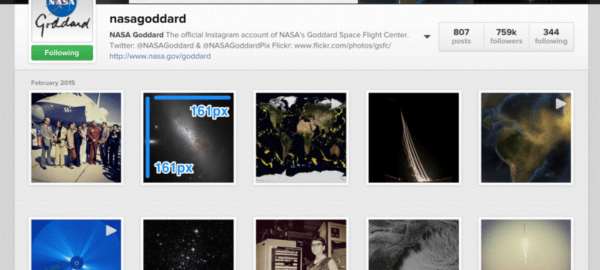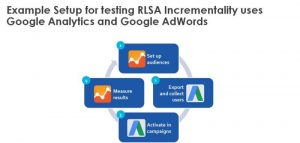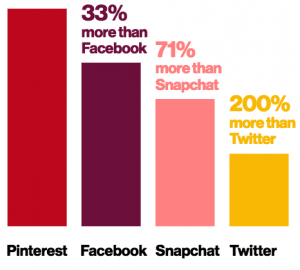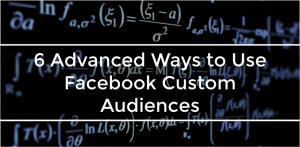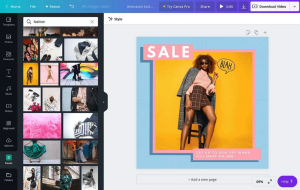— July 31, 2017
Social media has shifted the way ecommerce businesses interact with their existing and potential customers. It has pushed retailers to “humanize their brand” to engage with their fans at a more personal level.
Images are a key part of this type of interactions. They set the mood of a social media post and dictate the look and feel of a brand. Is the brand elegant and serious? or happy and cheerful? Taking a quick look at a brand’s social media feed and its images, easily answers those questions and helps get a better grasp of what a brand is about. This shows us the importance of having optimized photos.
Without deliberate optimization, you can end up having an inconsistent brand image and preventing search engines from finding your photos. Take these easy tips to optimize your images and strengthen your brand on social.
How Important Images Really Are
Does a social media post always have to have an image? Well, yes! Tweets with images get around 150% more retweets and 313% more engagement than text only posts. According to BuzzSumo Facebook posts that contain images will see 2.3 times more engagement. On a photo driven site like Snapchat, you’re looking at users sharing over 9,000 photos per second! Pinterest and Instagram exist because they are image based sites. In the Social Media Marketing Industry Report, 37% of marketers reported that visual marketing was their most important form of content for their business. (second only to blogging). So, yes images are a must!
Our addiction to social media platforms can be seen by an outrageous social media statistic reported by the New York Post that revealed: 40% of plastic surgeons said patients were choosing plastic surgery to look better in their “selfies” on social media.
One Size Doesn’t Fit All- Choose the Right Image Sizes
Your image must be the right size for the right platform. You know that feeling when you post what you think is a sensational picture and once you’ve posted it –it looks hideously stretched or blurry? If in doubt, rather choose to go with a bigger image as there will be no loss of quality when the image is scaled down by the platform. Scaling up a low-quality image just creates immediate distortion and pixelation.
Lindsay Kolowich of Hubspot puts the latest image sizes for social media posts as:
1.Facebook: Cover image: 828 x 315, Profile image: 180 x 180, Shared image: 1200 x 900, Shared link preview image: 1200 x 628. Wider images look more professional on this channel.
- Twitter: Header image: 1500 x 500, Profile image: 400 x 400, Timeline image: 506 x 253
- Google+: Profile image: 250 x 250, Cover image: 1080 x 608, Shared image: 506 pixels wide, Shared link image thumbnail: 150 x 15. A glorious wide image is going to possibly be spread across multiple columns and will dominate. You’ll be taking up loads of screen space!
- Instagram: Profile image: 110 x 110, Image thumbnail: 161 x 161, Shared images: 1080 x 1080, Shared videos: 1080 pixels wide. Instagram loves square images. But portrait and landscape work well too.
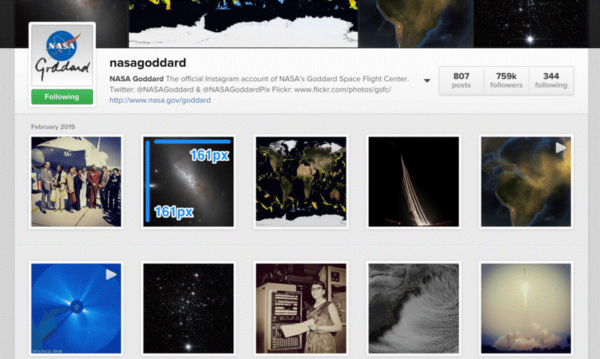
- Pinterest Image Sizes: Profile image: 180 x 180, Board cover image: 214 x 100, Pin preview: 238 pixels’ wide. Tall images perform best.
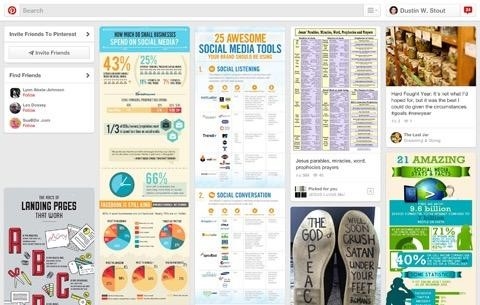
- LinkedIn: Banner image: 1850 x 200, Profile image: 400 x 400, Cover image: 1536 x 768, Shared image: 350 pixels wide, Shared link preview: 180 x 110, Logo image: 400 x 400
Snapchat: Geofilter: 1080 x 1920
Every Masterpiece Needs a Name- Make Your Images SEO-friendly
Your picture requires a descriptive title. It can’t just be a line of numbers, that would mean you’re not using every ounce of the image SEO to your advantage. People want context for what they are looking at and a clever title tells them what they are “seeing”. Search engines can’t read picture pixels –they prefer to read, and a title will get you a better ranking on the SERP’s (search engine results page). Make sure the title is short and clear. You can also utilize the opportunity to use one of your long tail keywords if applicable.
You have another great chance to chat to the search engine to let them know what they are “looking at” with your image, and they’re called alt tags. This is basically a detailed explanation of your chosen title for the image and should be no longer than 125 characters. Traditionally these were added using HTML code for your website. This is a feature you can also make use of on a WordPress interface.
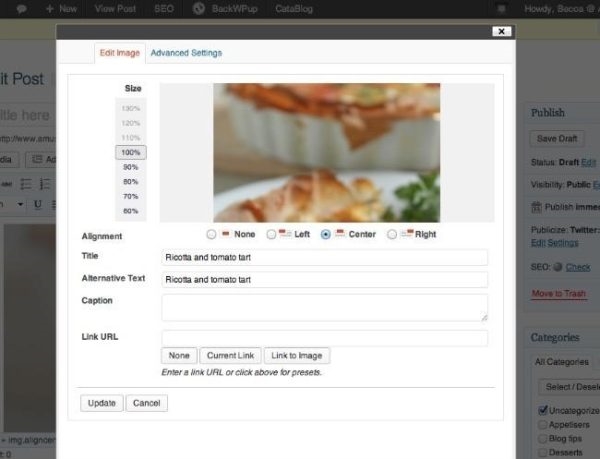
The great news is that this function is available on both Pinterest (same as your pin description) and Twitter (go to accessibility options & add “compose image description) Voila!
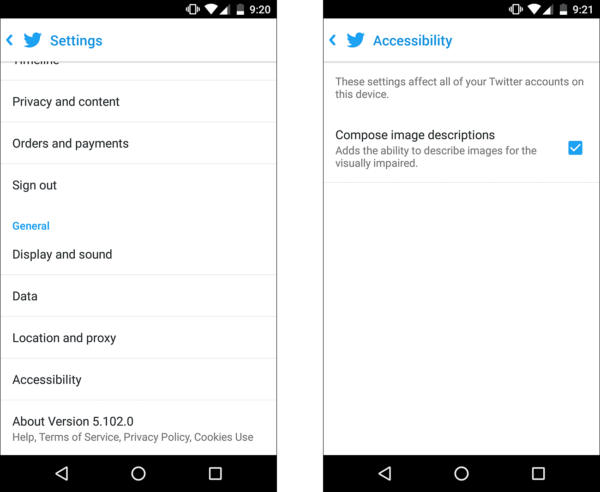
When you add titles and alt tag image descriptions your search engine is going to be ecstatic and deliver your content to your target audience.
Relevant Images for the Right Demographics
Your social media images must appeal to your targeted demographic, otherwise, you won’t be able to grab their attention and become irrelevant to them. You want to deliver imagery that truly speaks to your particular demographic on a specific platform. Keep in mind that users go to different platforms for completely different needs –make sure you are speaking the right language for the right channel.
Start by analyzing what your competitors are posting and how your target market is reacting to it. Test with similar types of posts that are engaging, but have your own twist. For instance, if you’re targeting millennials and see gifs are trending, then you may want to test them giving them your unique twist.
Giving a Consistent Look & Feel
Even the best-photographed images need a bit of image editing. It helps enhance the color of images and keep a consistent brand look. The latter is what makes a social media feed visually appealing. For instance, see below how Gucci and Dolce & Gabbana achieve distinct and unique look and feel with the help of photo editing:
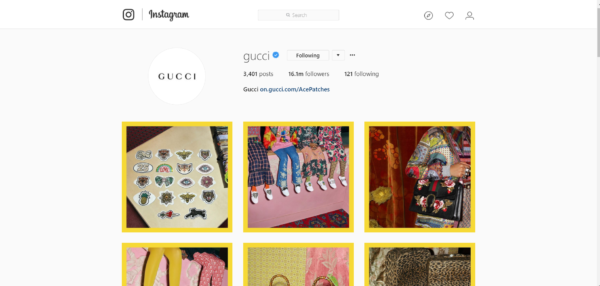
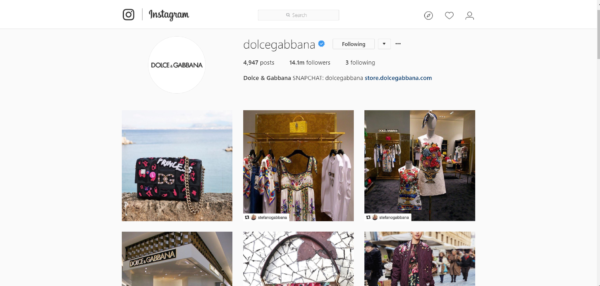
Both of them are vibrant and colorful, but Gucci has more saturated colors featuring a yellow frame. To enhance the look of your images, you can opt for editing in-house or outsourcing it. Outsourcing is ideal for scaling and can be very cost-effective, however, some retailers prefer to do it in-house to gain more control.
If you’re editing yourself without a team, then invest in a software like Photoshop to edit in detail. For quick edits, you can opt for a photo editing app for to resize, crop and overlay text to.
Invest in Photography Gear
Remember you are only as good as your tools. Do you have professional gear? If you don’t or don’t know how to shoot product photos, you may benefit from a portable photography studio kit for your product shots. You can find affordable ones (around $ 100) on Amazon and they bring lights and background. Then you can use your smartphone or professional camera to take photos.
For lifestyle shoots, if you’re on a budget, you may get away with using your phone by adding the right gadgets. When you’re ready to post your photos, try to add your social media handle or brand whenever possible to avoid any misuse of your images.
What has been your experience with social media images and what has worked best for you? Comment below!
Digital & Social Articles on Business 2 Community
(110)
Report Post